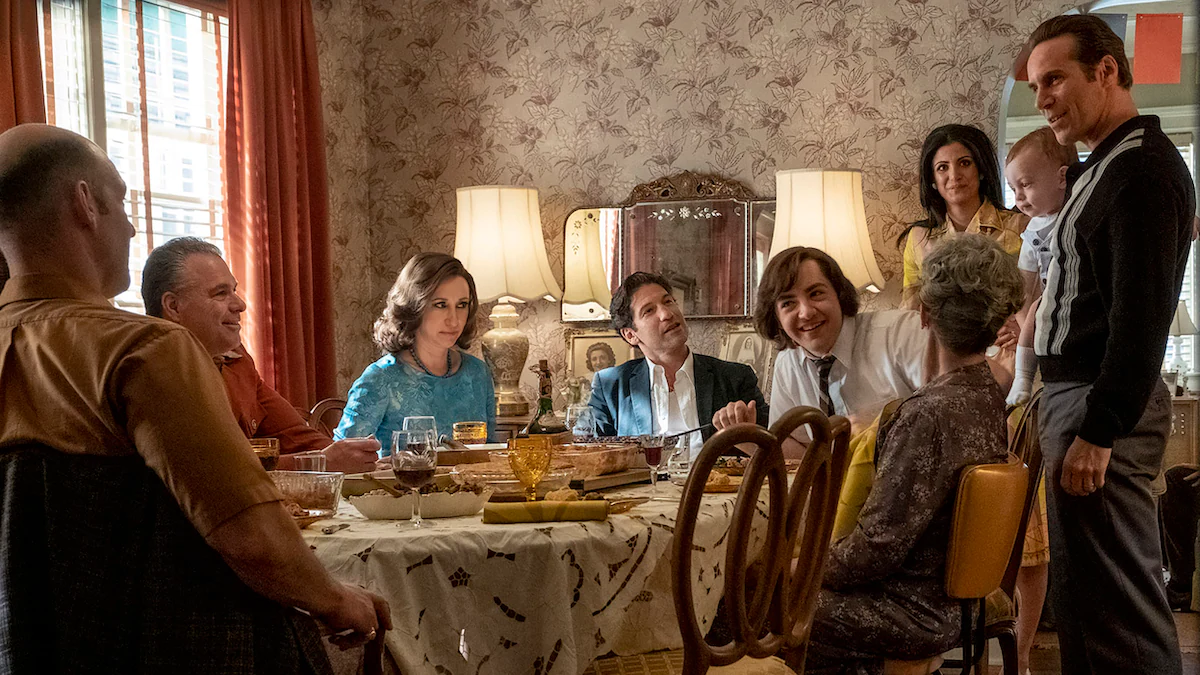If you work at one of the major broadcast networks, last week’s news that a cable network’s zombie show delivered the biggest TV rating of the fall must have given you pause — if not kept you up at night. Was The Walking Dead’s crazy huge performance (a 5.8 in the valuable adult demo) some nutty outlier? Not entirely, because FX’s Sons of Anarchy recent topped broadcast shows in its time period. And last week, FX’s American Horror Story debuted high enough to rank #2 in its slot.
This is part of a long-term trend. Lower-rated cable dramas have been on the rise, while higher-rated broadcast dramas have been eroding. Now we’re seeing a few of those cable hits outright win their slots.
So: Is there something the Big Four networks can learn from shows like The Walking Dead?
Yes. Six things.
Shorter: This is an idea that broadcast is actually starting to adopt. Big networks are experimenting with cable-style 13-episode seasons, like NBC’s upcoming Hannibal. Broadcasters vastly prefer the standard 22-episode season because it creates more stability across a schedule and it helps shows hit that standard 100-episode goal for flipping into syndication. But a short season gives a creative team more time to craft great episodes. Any honest showrunner will tell you: If jamming out 22, there’s going to be a few dogs in that kennel. With all the growing competition for viewers, many TV fans rather commit to 13 amazing hours than 22 pretty good ones.
Serialized: Broadcasters love shows with close-ended episodes — The Mentalists and Law & Orders of this world. They perform better in repeats and are easy to sell into syndication. But TV fans, particularly younger fans, love a great serialized story that has a cliffhanger every week. Network executives still have some wariness of serialized shows, pointing to dramas in recent years that tried to be the next Lost and failed. But what was last fall’s biggest new drama? Once Upon a Time (serialized). This fall? Revolution (serialized). “I think success is less about serialized vs. non serialized and more about whether a show is novel,” countered one broadcast executive. “Zombies were something new.” Perhaps, but it’s tough to imagine a show being successful featuring a different zombie crime each week.
Patience: SOA‘s first season ratings weren’t high enough to survive on broadcast. They are now. While Walking Dead more than doubled its premiere rating from two years ago. So what does that tell you about broadcast’s tendency to cancel a show a few weeks after it debuts? Now, I want to be careful here. As much as we all moan about broadcast axing shows, networks nearly always make the right call. If a series opens poorly and keeps going down that’s a clear sign of audience rejection. And sometimes, broadcasters admirably stick with quality struggling shows — NBC renewed The Office after its poorly rated first season and it became a hit. Fox stuck with Fringe, though that hasn’t paid off in the numbers. “If we see positive momentum in the ratings, or if we see creatively a show is hitting it out of the park, most of us will give it the benefit of the doubt,” one broadcaster said.
Braver: Okay, this point is huge, but complex. The Big Four rejected The Walking Dead partly because a gory cannibalism drama seemed too extreme for a primetime audience. But it’s apparently not. Cable keeps pushing the content envelope, while broadcast tentatively follows several footsteps behind. With the Supreme Court letting broadcasters slide this summer for alleged content violations from years past, the reins may be loosening on what networks can get away with.
That said, broadcasters’ real concern about bold content is not a government crackdown, but alienating advertisers. “Advertisers literally have lists of things they find inappropriate for their ads,” said one broadcast veteran. “Sometimes it’s religious things, sometimes it’s violence, sometimes it’s sex.” Advertisers hire pre-screening services to watch every episode of a show before it airs, checking boxes when certain racy elements appear (abortion, drug use, adultery, etc). Based on an advertiser’s list of preferences, those checked boxes are used determine whether they “opt out” of having their ad on any given episode. It’s a process that, understandably, contributes to broadcast executives being nervous about taking risks. “The broadcast guys are all about the path of least resistance,” one top cable sales executive says. “That’s the nature of broadcast. Their sales guys are going, ‘Don’t get me zombies, I’d much rather sell The Voice.’”
Insiders say a toned-down version of The Walking Dead could have worked for broadcast (and some argue Revolution is just that). Ad rates might not have been optimal, but a network can feel good about less-than-ideal sales if an show is delivering huge ratings — one hit can help a whole schedule and success is always better than failure. ”Could we sell The Walking Dead? Yeah,” a broadcaster says. “Would every advertiser want to be on it? Probably not. But we could still fill the hour [with ads].”
My point here is not that broadcast needs to be as graphic as cable. There’s all kinds of ways to be brave. Often the scariest part of a pitch is the audacity of the idea. The point is broadcasters could, and should, be braver than they are now. “A lot of the questions [about a show] go away once you’re doing a big number,” one executive noted.
Geekier: The Walking Dead and American Horror Story, along with last season’s drama breakout Once Upon and this fall’s Revolution and Arrow, all have something in common: They’re sci-fi/horror/fantasy. Genre titles were long considered “too narrow” for a big audience. The X-Files and Lost helped change that. TV fans love geek-friendly content, not just the cop-doctor-lawyer shows. This is another area where broadcast has gotten a lot bolder the last few years. NBC’s development slate is starting to look like Syfy, with Hannibal, Dracula and Alice In Wonderland in the works. Which brings us to…
Realer: Before we go into this final point there’s some disclaimer points to make. Cable networks benefit from two major revenue streams instead of one (ads and subscriptions), have far fewer original programming slots to fill, have a lower ratings threshold to hit, and repeat their dramas endlessly to get them added exposure. Put simply: It’s arguably easier to launch and build a great drama on cable, and there’s many people working in broadcast who would want this pointed out. But this story isn’t about the inequality of two business models, this is about what broadcast can potentially learn creatively from cable hits. So let’s resume:
Broadcast clings to the idea that shows must feel all-inclusive, even if it means being rather superficial (which is how you end up with Fox’s Terra Nova, a show about surviving in a hostile prehistoric world with characters that can’t kill dinosaurs). While cable has doubled down on making dramas as intensely realistic as possible. As a result, cable dramas not only undermine broadcast ratings by directly siphoning off viewers, they also undermine similar broadcast shows indirectly by making some of them look silly and unrealistic by comparison (if you were a fan of The Shield, it’s awfully hard to watch a broadcast cop show). And guess what? We have cable networks exclusively creating family programming too, so there’s competition for that audience as well. Broadcasters should relieve themselves of the burden of trying to entertain ages 8 to 80. There are 311,591,917 people in the U.S., give or take, and you only need 10 million for a hit. Don’t try to be as broad as possible. Just try to be as awesome and true to a story as you can be.
PREVIOUS: Fall TV: Are you not entertained?



 Movies News6 years ago
Movies News6 years ago


 Movies News4 years ago
Movies News4 years ago


 Movies News4 years ago
Movies News4 years ago


 Movies News4 years ago
Movies News4 years ago
